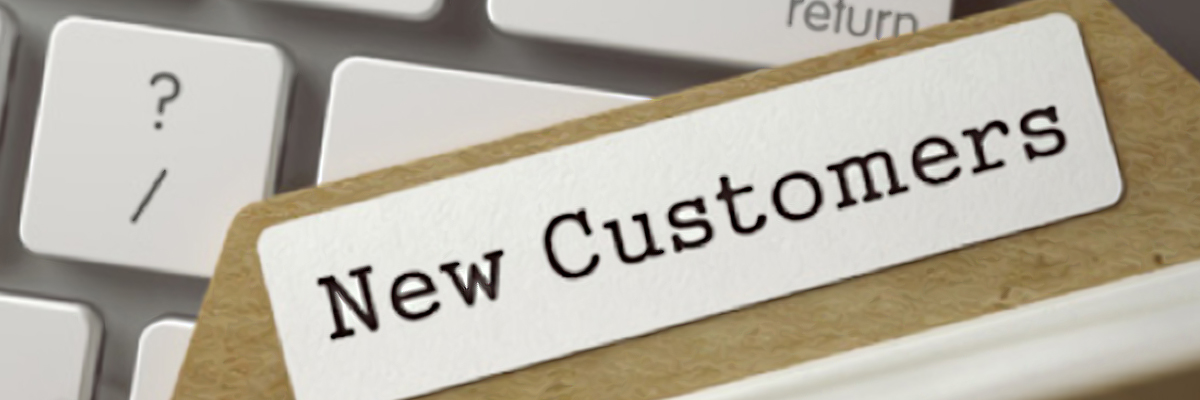5 B2B Email Steps for Finding More Customers in the New Year

Blog post By Paula Chiocchi on 2017-01-04
Unlike customer email campaigns, which are directed at a company’s current customer base, B2B email acquisition initiatives are designed to reach new prospects that align well with the products and services a business offers. The ultimate goal of an acquisition campaign is to convert these prospects into paying customers.
There’s a right approach and a wrong approach to these types of campaigns, and any missteps can impact your revenue goals. For those new to email marketing – and even for those experienced marketers who could use a refresher – here are five basic questions and answers about B2B email acquisition, and how it can fuel greater success for your business in the coming year:
- What is customer acquisition data? Simply put, customer acquisition data is email contact information that allows you to target new customers to grow your business. For cost efficiency, my advice is to work with a reputable vendor that will allow you to license their email acquisition data for unlimited use for a full year, as opposed to buying a one-time use list. Licensing your email data will also ensure it is consistently cleansed and up to date, as you will be able to purge hard-bounced, invalid email addresses throughout the year. Going this route will also help you build and grow your in-house list as you engage with contacts over time.
- Who should I target as customers? The first place to start when targeting new customers with acquisition data is to consider and examine your existing customer base. Who are they? What are their roles and responsibilities? What kinds of businesses do they represent? Where are they located? What size is their business? What challenges does your product or service solve for them? Only by knowing the make up of your existing customers will you be in position to recognize those businesses that represent your ideal prospects.
- What’s the best approach to selecting B2B customer acquisition data? The best advice is to focus on quality, not quantity. Make sure to zero in on your ideal customer. When acquiring email data, you should be able to make selections across a variety of fields including state, city, zip code, employee size, revenue, SIC and NAICS codes, and more. To support multi-channel marketing efforts, your best bet is to acquire complete records for each business contact, including email address data, telephone, address, etc.
- How do I use customer acquisition data? Once you’ve acquired customer acquisition data, you’ll want to design email campaigns to convert these targeted prospects into customers. Start by crafting email campaigns that deliver helpful, insightful content of real interest to your prospects. You don’t want to start off on the wrong foot with a heavy-handed or salesy message: this approach not only turns off your audience, but it can also trigger SPAM blockers and filters. Customer acquisition emails should quickly pique the interest of the recipient – via an intriguing subject line -- and spur action via engaging copy, an appealing design and a valuable call-to-action (CTA). Content might cite industry stats or articles that speak to the recipients’ shared challenges, or invitations for recipients to view videos and attend webinars or other events to learn how like-minded professionals have been successful. The CTA will help recipients initiate the journey towards solving their challenges with your help. In exchange, you will want to collect their contact information for your follow-up.
- What do I do with those who respond to my emails? If done correctly, your initial email campaigns will yield some interested prospects who clicked on your CTA and provided their contact information. You’ll want to have a plan ready for what to do with these leads once you get them. While this could include calling them right away, a better option is to move them to a separate list for lead “nurturing.” This could entail sending them regular follow-up communications on their topic of interest based on their previous behavior (for example, if they clicked to view your report), with the hope that they’ll continue to engage with your content, and continue taking the next step in the sales process. These incremental steps might include attending a webinar, watching a video or downloading a coupon. Use a CRM (customer relationship management) system to keep track of which prospects are responding to what content, and be sure to send the right message to the right prospects as the sales cycle advances. Once you’ve engaged with your prospects via your informative content, they will view you as a trusted advisor, be more open to further communications, and, hopefully, turn to you as paying customers.
These are the most basic questions we receive from our clients. While we know that a lot goes into growing a business, we hope this information will inspire you with ideas for hitting the ground running in the New Year.
###
Outward Media’s accurate, targeted email data can help you achieve better email marketing ROI, and convert more prospects into customers. Ask us how. Also, take a look at our complimentary new e-book on building a successful B2B email marketing database.
DOWNLOAD YOUR FREE ebook
At OMI, we believe good things happen when you share your knowledge. That's why we're proud to educate marketers at every level - in every size and type of organization - about the basics of email marketing and the contact data that powers it.
-
The Executive's 15-Minute Guide to Building a Successful Email Marketing Database
-
A 15-Minute Guide to Fortune 2,000 Businesses and Executives
-
Five Best Practices for Using Email Marketing to Target SMBs



